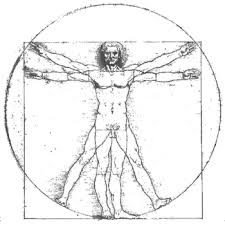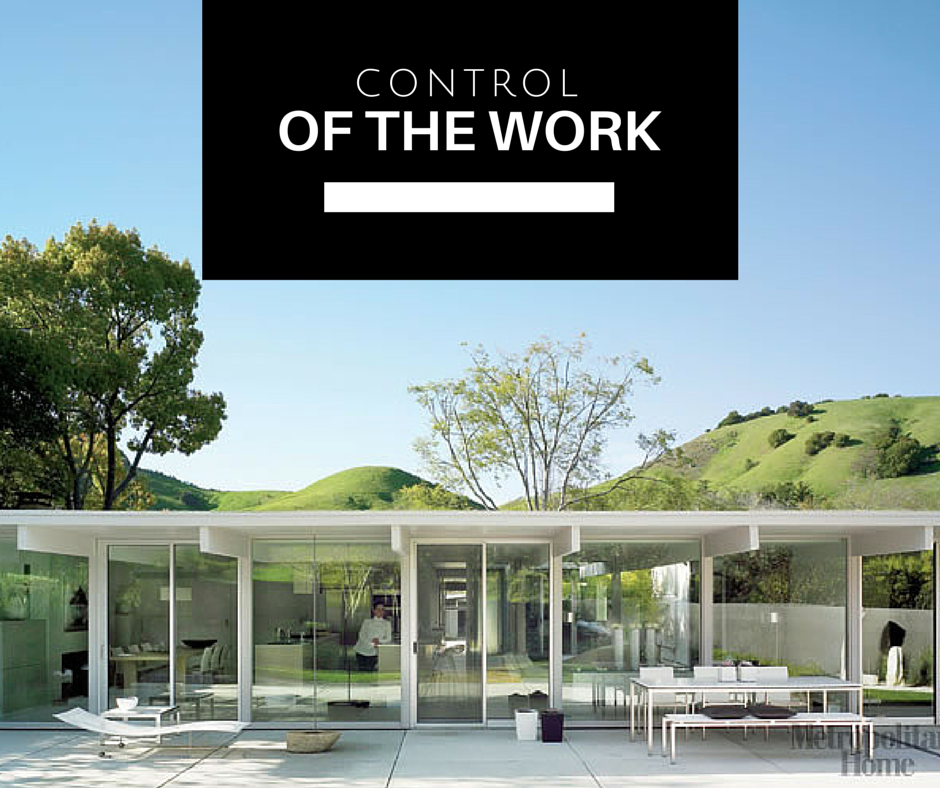
One of the fundamental elements of contract administration is the establishment of clear roles and responsibilities among the project team. This clarity is crucial in construction projects where multiple stakeholders must collaborate seamlessly, including architects, engineers, contractors, and clients. Clear delineation of duties ensures that every member knows their specific contributions and obligations, thereby reducing misunderstandings and enhancing team dynamics.
- Roles: Define who is responsible for what, from design to execution.
- Responsibilities: Establish accountability to ensure tasks are completed on time and within budget.
- Expectations: Set benchmarks for quality and performance to guide the project towards its goals.
Adopting a structured approach to contract administration can significantly improve productivity and project outcomes. Tools like RForm and methodologies such as Getting Things Done (GTD) offer frameworks that support efficient task management and project tracking. These structured systems streamline processes and foster collaboration and effective communication among stakeholders.
Architects can mitigate risks by integrating structured strategies into contract administration, optimizing resource allocation, and ensuring successful project delivery. As we delve deeper into the components of structured contract administration, the benefits of adopting such approaches become increasingly apparent, paving the way for enhanced teamwork and superior project results.
The Importance of Structure in Contract Administration
Structured contract administration is indispensable for fostering effective communication among project stakeholders. A well-defined structure acts as a roadmap, guiding team members through complex project landscapes and ensuring everyone is on the same page. This clarity eliminates ambiguities, thereby enhancing team collaboration and decision-making processes.
Clearly outlined roles prevent overlap and ensure accountability, essential for successful project management. Consider the following bullet points that highlight the significance of structured roles:
- Project Managers: Coordinate the overall project, manage timelines, and ensure adherence to the project plan.
- Architects: Develop design plans to meet client specifications and regulatory standards.
- Contractors: Execute construction tasks according to the design specifications and within the allocated budget.
- Clients: Provide feedback and approvals at key project stages to ensure satisfaction with the project’s progress.
Beyond communication and role clarity, a structured approach is instrumental in reducing risks associated with contract management. When responsibilities are clearly defined, it minimizes the chances of miscommunications and delays, which can lead to costly project setbacks. Structured methodologies, such as Getting Things Done (GTD) and tools like RForm, support risk management by providing consistent processes for monitoring and controlling project tasks.
Consider the comparison of structured and unstructured approaches in the table below:
| Structured Approach | Unstructured Approach |
| Clear roles and responsibilities | Ambiguous roles leading to confusion |
| Improved communication channels | Fragmented communication |
| Proactive risk management | Reactive and often delayed responses |
Implementing structured contract administration enhances project efficiency and builds a robust foundation for successful outcomes. As architects and project managers, embracing structure in your processes can improve project delivery and greater stakeholder satisfaction.
Tools for Effective Contract Administration
In contract management for architecture and civil engineering projects, leveraging the right tools can streamline processes and enhance workflow efficiency. Two notable methodologies include RForm and the Getting Things Done (GTD) principles, each offering distinct advantages in managing contracts effectively.
RForm – Streamlining Contract Administration: RForm is an innovative tool designed to support contract administration by providing a comprehensive suite of features tailored to the needs of project stakeholders. Key features of RForm include:
- Document Management: Streamline the storage and retrieval of important documents, ensuring easy access and organization.
- Task Tracking: Monitor project tasks in real-time, allowing for proactive management and timely completion.
- Automated Notifications: Keep team members informed with automated alerts for deadlines and project updates.
- Collaboration Tools: Facilitate stakeholder communication with integrated messaging and file-sharing capabilities.
These features support project managers and architects maintain control over complex contract details, ultimately leading to more successful project outcomes.
Applying GTD Principles in Architectural Projects: The Getting Things Done (GTD) method, popularized by productivity expert David Allen, emphasizes capturing tasks and organizing work efficiently. In the context of architectural projects, GTD principles can be applied as follows:
- Capture: Collect all contract-related information in a centralized location, ensuring nothing is overlooked.
- Clarify: Break down tasks into actionable items, making them easier to manage and delegate.
- Organize: Categorize tasks based on priority and deadlines, enabling effective time management.
- Reflect: Regularly review project goals and progress to ensure alignment with client expectations.
- Engage Act on prioritized tasks, focusing on achieving key project milestones.
Comparing RForm and Traditional Methods
The table below provides a comparative analysis of RForm and traditional contract administration methods, highlighting their benefits and drawbacks:
| Aspect | RForm | Traditional Methods |
| Efficiency | Automated processes save time | Manual processes are time-consuming |
| Collaboration | Real-time communication tools | Limited to email and in-person meetings |
| Document Management | Centralized digital storage | Physical storage or dispersed files |
| Risk Management | Proactive with alerts and tracking | Reactive with delayed responses |
By integrating tools like RForm and applying GTD principles, architects and project managers can boost efficiency, enhance collaboration, and reduce risks in contract administration. These tools and methodologies offer a structured approach to achieving successful project execution.
Implementing a Structured Approach
Here, we outline a step-by-step process to implement this structured approach, share a case study for illustration, and offer a practical checklist for project managers.
Step-by-Step Process
- Initial Setup: Gather all necessary project documents and input them into RForm. Ensure that all team members have access to this platform.
- Task Breakdown: Use GTD principles to break all project tasks into actionable steps. Assign these tasks to respective team members with clear deadlines.
- Prioritization: Organize tasks by their urgency and importance. Use RForm to set reminders for critical deadlines and milestones.
- Communication Plan: Establish a communication strategy using RForm’s collaboration tools. Schedule regular meetings and updates to ensure alignment.
- Review and Reflect: Implement regular review sessions to assess progress. Reflect on completed tasks to identify areas for improvement.
- Engagement: Encourage team members to focus on their prioritized tasks, fostering a productive and engaged work environment.
Checklist for Contract Administrators
- Access and Setup: Ensure all team members can access RForm and understand its features.
- Task Assignment: Clearly define and assign tasks using GTD principles.
- Communication Strategy: Develop and implement a regular communication plan.
- Regular Reviews: Schedule periodic reviews to track progress and make necessary adjustments.
- Feedback Mechanism: Establish a feedback loop to address issues and celebrate successes.
- Continuous Improvement: Encourage ongoing reflection and improvement of processes.
By following this structured approach, Contract administrators can ensure a well-coordinated effort, reduce risks, and achieve project goals efficiently. This methodology sets the foundation for successful contract administration and enhances team dynamics, paving the way for improved project outcomes.
Enhancing Collaboration through Structured Communication
By implementing a structured communication plan using tools like RForm, teams can streamline interactions and ensure everyone is on the same page. Here, we explore strategies to enhance collaboration and highlight the importance of regular updates and feedback loops.
Strategies for Fostering Collaboration: Creating an environment where team members feel valued and informed is essential. Consider the following strategies:
- Set Clear Objectives: Define project goals and objectives early on, ensuring all stakeholders understand their roles and responsibilities.
- Use Collaborative Platforms: Implement platforms like RForm that allow real-time updates and document sharing, facilitating seamless communication.
- Encourage Open Dialogue: Promote a culture of openness where team members can freely share ideas and concerns without fear of judgment.
- Regular Check-ins: Schedule meetings to discuss progress, address issues, and align on upcoming tasks.
Importance of Regular Updates and Feedback Loops: Regular updates and feedback loops are vital for maintaining transparency and trust among stakeholders. They provide opportunities to:
- Identify and Resolve Issues: Promptly address any challenges or roadblocks that may arise.
- Adjust Strategies: Make informed decisions to adjust strategies based on feedback and progress reports.
- Enhance Accountability: Ensure all team members know their progress and responsibilities.
Implementing a structured schedule for these updates can greatly enhance the overall flow of communication and project execution.
Measuring Success: Outcomes of Structured Contract Administration
A structured contract and project management approach can significantly enhance project outcomes. By utilizing tools like RForm and adopting effective team dynamics, organizations can achieve measurable improvements in project execution and stakeholder satisfaction. Let’s delve into the tangible and qualitative benefits of structured contract administration.
Data-Driven Benefits: Structured contract administration has positively impacted project outcomes across various metrics. What type of ROI might the following data bring to your organization?
| Metric | Improvement |
| Project Completion Time | Reduced by 20% |
| Cost Overruns | Decreased by 15% |
| Communication Efficiency | Improved by 30% |
These statistics underscore the efficiency and effectiveness of structured approaches for architecture and civil engineering projects.
Qualitative Outcomes: Beyond quantitative metrics, structured contract administration also yields qualitative improvements:
- Enhanced Teamwork: Defined roles and responsibilities foster a collaborative environment where team members work towards common goals.
- Stakeholder Satisfaction: Regular updates and transparent communication increase trust and satisfaction among stakeholders.
- Risk Mitigation: Proactive management and contingency planning reduce potential risks and improve decision-making.
In conclusion, measuring structured contract administration’s success involves quantitative and qualitative assessments. By leveraging data, understanding the qualitative benefits, and listening to industry voices, organizations can better appreciate the value of structured approaches in achieving project excellence.
Frequently Asked Questions (FAQ)
Contract administration plays a pivotal role in architecture and civil engineering projects, so understanding its nuances is essential for project success. Below is a compilation of common questions related to contract administration for architects, along with concise answers to guide you through the process.
- Why is a structured approach important in contract administration? A structured approach helps define clear roles and responsibilities, promotes effective communication, and reduces risks. It ensures that all stakeholders are aligned and working towards common objectives, leading to improved project outcomes.
- How does RForm enhance contract administration? RForm provides a centralized platform for managing contracts, tracking changes, and ensuring compliance with contractual terms. Its features, such as document management and real-time updates, streamline the contract administration process.
- Can Getting Things Done (GTD) principles be applied to contract administration? GTD principles focus on organizing tasks and responsibilities, prioritizing actions, and setting clear goals. Applying these principles to contract administration can enhance efficiency and ensure that all tasks are completed on schedule.
- What are some common challenges faced in contract administration? Common challenges include miscommunication, scope changes, unforeseen risks, and project delays. A structured approach, supported by tools like RForm, can help mitigate these challenges by providing clarity and facilitating effective communication.
Conclusion: The Path to Successful Project Execution
A structured approach is indispensable for navigating the complexities of project management, particularly within architecture and civil engineering. This article has explored how leveraging tools like RForm and applying Getting Things Done (GTD) principles can significantly enhance team dynamics and project outcomes.
Throughout our discussion, we have highlighted several key aspects that contribute to successful project execution:
- Structure: Establishing clear roles and responsibilities fosters effective communication and reduces risks. A well-defined structure ensures that every team member understands their tasks and how they contribute to the overall project goals.
- Tools: Utilizing platforms like RForm centralizes contract management, ensuring compliance and real-time updates. This streamlines workflows and minimizes the chances of miscommunication and errors.
- Collaboration: Encouraging open communication and feedback loops strengthens teamwork and stakeholder satisfaction. Regular updates and collaborative tools can help maintain alignment among all parties involved.
Moreover, integrating structured approaches in contract administration can lead to significant risk reduction. By clearly defining processes and expectations, teams can proactively address potential issues before they escalate into larger problems. This proactive mindset is essential for maintaining project timelines and budgets.
One of the most compelling aspects of adopting a structured approach is the measurable impact it can have on project outcomes. Data shows that projects utilizing structured methodologies experience higher rates of success, including:
- Increased on-time project delivery
- Improved stakeholder engagement
- Enhanced quality of deliverables
For instance, a case study conducted by the Project Management Institute revealed that organizations implementing structured project management practices saw a 20% increase in project success rates. This statistic underscores the importance of adopting a systematic approach to project execution.
In addition to quantitative benefits, qualitative outcomes such as improved teamwork and stakeholder satisfaction cannot be overlooked. When team members feel empowered and informed, they are more likely to contribute positively to the project. As we conclude, it is crucial to reiterate the importance of a structured approach for achieving project goals. Combining effective tools, clear communication, and defined roles creates an environment where teams can thrive. By embracing structure, architects and project managers can enhance their workflows and ensure that their projects are executed with precision and excellence.
We encourage you to assess your current project management practices critically. Consider incorporating structured methodologies and tools like RForm to optimize your processes. By doing so, you will be better equipped to handle the complexities of contract management and drive your projects to completion.
In summary, embracing structure, leveraging the right tools, and cultivating effective collaboration are essential steps toward elevating your workflow. Take the initiative today to implement these strategies and witness the transformative impact they can have on your projects.
Citations
- Allen, David. Getting Things Done: The Art of Stress-Free Productivity. New York: Penguin Books, 2001.
- Allen, David, and Brandon Hall. Getting Things Done with Teams: The Art of Stress-Free Productivity for Teams. New York: Penguin Random House, 2021.
- Maximizing Transparency and Decision-Making Through Contract Administration: https://rform.ca/maximizing-transparency-and-decision-making/

